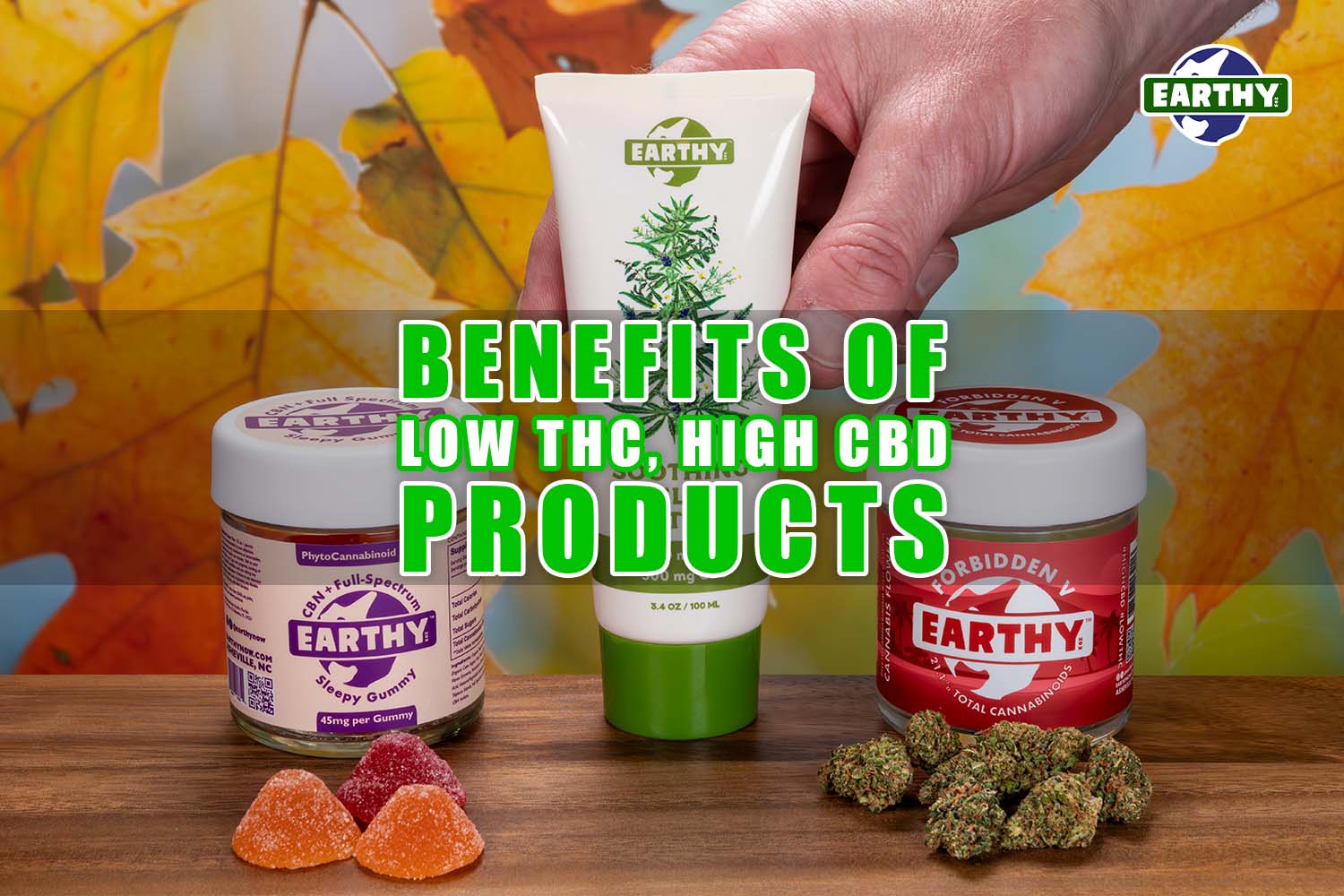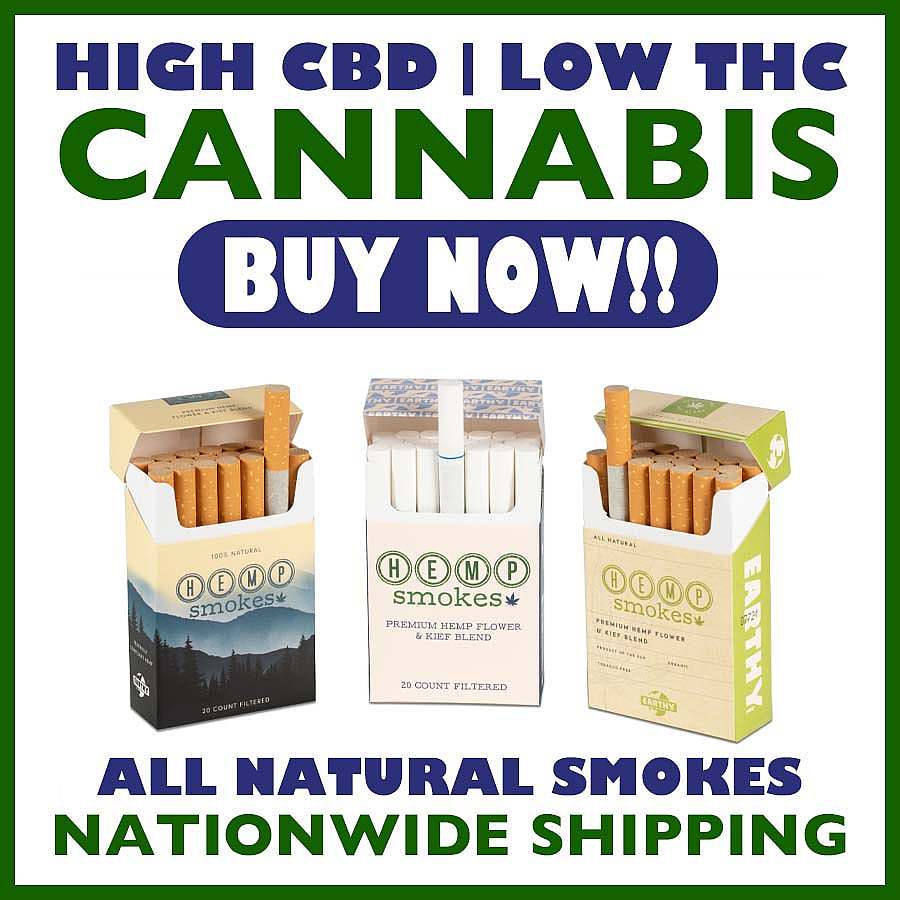The cannabis scene has witnessed a seismic shift in recent years. Gone are the days when cannabis was solely associated with mind-altering effects. Today, there is a growing demand for low-THC, high-CBD products that offer numerous wellness benefits without the psychoactive punch. In this article, we’ll explore the rising popularity of low-THC, high-CBD products, demystify the science behind them, and shed light on their potential benefits.
Understanding the basics of THC and CBD
To comprehend the appeal of high-CBD, low-THC products, it’s crucial to grasp the fundamentals of these two compounds. Let’s define each cannabinoid.
- DELTA-9 THC (Delta-9 Tetrahydrocannabinol): Delta-9 THC is the psychoactive compound found abundantly in marijuana and minimally in hemp. Responsible for the “high” that cannabis users experience, Delta-9 THC is tightly regulated due to its psychoactive effects [1].
- CBD (Cannabidiol): CBD is a non-psychoactive cannabinoid found in varying concentrations in marijuana and hemp. Unlike THC, CBD does not induce mind-altering effects. Instead, it’s known for its own benefits and is featured in numerous wellness products [1].
One key legal distinction between the two lies in the Delta-9 THC content. For example, plants containing no more than 0.3% Delta-9 THC are classified as hemp and are federally legal in the United States. Correspondingly, products made from hemp must contain no more than 0.3 % on a dry weight basis to be federally compliant [2]. This legal threshold has opened the door to a wide array of high-CBD, low-THC cannabis products.
The proliferation of high-CBD, low-THC products
The widespread availability of high-CBD, low-THC products can be attributed to various factors. Historically, CBD-rich strains were relatively rare, but the rise of industrial hemp farming has changed this landscape dramatically [3].
Hemp’s Legality: With the passing of the US Farm Bill in 2018, the cultivation of industrial hemp became legal at the federal level [4]. This move led to an explosion of hemp-derived products, including CBD-rich edibles such as gummies, as well as smokable products such as Hemp Smokes.
Tracing the History: The story of high-CBD strains dates back to the efforts of the Stanley brothers, who developed the now-famous “Charlotte’s Web” strain to help a young girl named Charlotte Figi with her severe seizures. This strain garnered widespread attention and marked the beginnings of high-CBD cannabis products [5].
More about Charlotte’s Web
Charlotte’s Web is a cannabis strain developed by Joel, Jesse, Jon, Jordan, Jared, and Josh Stanley by crossbreeding a strain of marijuana with industrial hemp. This process created a cannabis variety with less THC and more CBD than typical varieties of marijuana or hemp available at the time. As a result, their unique strain earned fame for its ability to relieve various conditions [6].
These determined brothers meticulously bred this potent strain, ultimately making it suitable for individuals seeking the benefits of CBD without the psychoactive effects associated with THC. Subsequently, Charlotte’s Web became a pioneering CBD product, harnessing the power of naturally occurring CBD in the cannabis plant to relieve patients. Moreover, their success led to the formulation of the CBD pharmaceutical drug, Epidiolex, the sole FDA-approved CBD medication currently on the market [6].
Researchers attribute the effects of CBD to its interaction with the endocannabinoid system and cannabinoid receptors in the body [7]. This interaction makes high-CBD flower strains like Charlotte’s Web a valuable resource [5]. Today, the realm of low-THC cannabis strains and CBD hemp products provides hope for many patients seeking relief [7].
Consumer options for low-THC products
Available in various forms, high-CBD, low-THC products cater to diverse consumer preferences. For example, many enjoy full-spectrum gummies, pre-rolls, oils, tablets, and the increasingly popular CBD flower strains in cigarette form. Each product type has its unique characteristics and selling points.
Full-Spectrum CBD: Products such as gummies, tinctures, salves, and tablets may contain a full range of cannabinoids, including CBD and trace amounts of Delta-9 THC. These are called full-spectrum products. In contrast, broad-spectrum cannabis products contain many cannabinoids, yet without Delta-9 THC. The “entourage effect” suggests that the combination of multiple cannabinoids may enhance their potential [8].
Hemp Flower: CBD flower strains, such as Hawaiian Haze, Bubba Kush, Sour Space Candy, and Sour Tsunami, offer a natural way to consume CBD with minimal THC. These smokable hemp flowers have a sweet aroma and often express earthy undertones. Moreover, smoking or vaping hemp flower provides a quick way to experience the relaxing effects of CBD for many users [9].
Benefits
The potential benefits of high-CBD, low-THC products make products especially appealing. For example, users report positive effects from hemp products high in the non-psychoactive cannabinoid [10]. Additionally, researchers have found promise in their potential, however, more research is necessary [11].
How to Use CBG Oil for Great Results
Safety and side effects
One of the remarkable aspects of CBD is its excellent profile. Unlike THC, CBD does not produce mind-altering effects, making it a viable option for those who want to avoid psychoactive compounds [12].
However, while CBD is generally considered safe, some users may experience mild side effects such as dry mouth, dizziness, or changes in appetite [12]. Therefore, it’s essential to start with a low CBD dose and gradually increase it while monitoring how your body responds.
Legal landscape & compliance
The passage of the Farm Bill in 2018 played a pivotal role in shaping the CBD market. This legislation legalized the cultivation of industrial hemp and the sale of hemp-derived products, including those with high-CBD levels [4]. However, the legality of CBD and THC products can vary by state and country, so it’s crucial to stay informed about local regulations. Even so, most states follow the guidelines of the federal legislation and embrace hemp-derived products that stay below the 0.3 % Delta-9 THC threshold. In states where recreational marijuana has been legalized, products may contain much higher Delta-9 THC content.
Guide to high-CBD, low-THC products
For those interested in a deeper dive into the world of CBD and THC, we’ll explore the options available. When it comes to using low-THC, high-CBD products, consumers have a variety of choices at their disposal. These products, derived from high-CBD strains, are known for their relaxing and calming effects, making them suitable for individuals seeking relief without the heavy mind-altering properties of THC [10].
Some available products include CBD oils, tinctures, capsules, edibles, and even smokable hemp flower strains like Hawaiian Haze. However, when starting with these first high-CBD strains, it’s crucial to begin with a low dose, especially if you’re new to cannabis products. This allows you to gauge your body’s response and gradually increase the dosage as needed. For example, many users find success with a daily regimen of a moderate dosage for mental clarity and calming effects [13].
The potential benefits of using low-THC, high-CBD products are diverse and can include relief and calm [7]. In scientific terms, these products interact with the body’s endocannabinoid system, helping to promote balance and overall well-being [7]. However, it’s essential to be aware of potential risks, such as mild side effects like dry mouth or dizziness [12], especially when starting a new strain or adjusting dosages.
Investigating the Top 10 Strains of Low-THC Cannabis
Where to purchase your high-CBD, low-THC cannabis flower and products
Consider purchasing your CBD products from a reputable local dispensary or a trusted online source such as Earthy Now to ensure quality and safety. Consulting with a healthcare professional can provide valuable guidance on the best approach to incorporating low-THC strains and high-CBD products into your wellness routine. While this article provides an overview of these products, understanding their compounds and their impact on health and wellness is not an exact science and may require further research.
Consumer testimonials
Real-world experiences of users who have benefited from high-CBD, low-THC products offer valuable insights. Many users report feeling uplifted, experiencing a clear head, and finding relief [14]. Reading user reviews can help potential buyers make smart decisions that suit their needs.
Making an informed choice
Whether you’re a first-time buyer or an experienced user, selecting the right high-CBD, low-THC product is essential. Always purchase from reputable brands and sources to ensure product quality and safety.
Things to Consider Before Purchasing High-CBD, Low-THC Hemp Products:
- CBD Content: Check the CBD content per serving or per product to ensure it meets your desired dosage requirements. Understanding the CBD concentration helps you determine the product’s potency and effectiveness.
- THC to CBD Ratio: The ratio of THC to CBD is crucial, especially if you want to avoid psychoactive effects. Ensure that the product adheres to the legal threshold (typically less than 0.3% Delta-9 THC) and offers a high CBD to low THC ratio for minimal mind-altering effects.
- Customer Reviews: Reading customer reviews provides valuable insights into the product’s effectiveness, quality, and potential side effects. Real-world experiences can help you make an informed decision.
- Third-Party Lab Tests: Look for products that have undergone third-party lab testing. These tests confirm the product’s cannabinoid profile, ensuring it contains the advertised CBD content and complies with legal Delta-9 THC limits. Access to lab results promotes transparency and quality assurance.
- Other Ingredients: Examine the list of other ingredients in the product, such as carrier oils, flavorings, or additives. Ensure they align with your dietary preferences and restrictions. Natural, organic ingredients are often preferred for health-conscious consumers.
- Federal Compliance: Confirm that the product complies with federal regulations, such as the Farm Bill in the United States [4]. Products derived from industrial hemp should be legal, but it’s essential to stay informed about any changes in legislation or regional restrictions to ensure compliance.
Exotic Cannabis Flower Jars: Suver Haze
Low-THC, high-CBD products – key takeaway
Hemp products with low-THC and high-CBD content are at the forefront of the health and wellness revolution. Notably, these products offer potential therapeutic benefits without the mind-altering effects of high-THC products, making them a valuable addition to self-care routines [10]. As research into cannabinoids evolves, the potential for high-CBD, low THC strains to contribute to our well-being is increasingly evident. Hence, it’s the perfect time to explore this exciting field and make informed choices that support your wellness.
Cannabis Cigarettes vs. Traditional Smoking
Medical Disclaimer / Legal Disclaimer – Information is provided for educational purposes. It does not and is not intended to constitute legal advice or medical advice. We attempt to be accurate and up-to-date, but the legality of cannabinoids and the science of cannabis are evolving. The author is neither a legal professional nor a medical expert. Before buying or using any products, you should check with your local authorities and medical providers.
References
- CBD and THC: What’s the Difference?
- CBD versus THC
- Introduction to Industrial Hemp
- Hemp Production and the 2018 Farm Bill
- History of Charlotte’s Web CBD Medication
- 7 Buds for 7 Brothers: Charlotte’s Web
- Can CBD Relieve Anxiety: Research Into the Endocannabinoid System
- CBD Full-Spectrum versus Broad Spectrum
- What Happens When You Smoke CBD?
- The Calming Effects of High-CBD, Low-THC
- CBD May Help You Quit Smoking
- Is CBD Safe?
- How Much CBD Should You Take?
- 9 Health Benefits of CBD According to Science
- How Long Does Weed Stay in Your System?
- Understanding the Confusing World of THC and CBD Ratios






